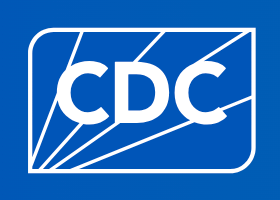Changes in the 2023 national HAI SIRs, compared to 2022 SIRs, by facility setting, National Safety Healthcare Network.
Image Credits: CDC

Changes in the 2023 national HAI SIRs, compared to 2015 baseline SIR of 1, by facility setting, National Safety Healthcare Network.
Legend:
Red upward arrow signifies statistically significant increase.
“No change” signifies that the change in SIR was not statistically significant
Green downward upward arrow signifies statistically significant decrease.
Image Credits: CDC

The 2023 CDC report shows that hospital-onset Clostridioides difficile infections (CDI) continue to decline, marking significant progress in the nation’s efforts to reduce healthcare-associated infections (HAIs). Specifically, CDIs dropped by 13% from 2022 to 2023, reflecting ongoing improvements in infection prevention practices across healthcare settings. Notably, CDI rates in 2023 were lower than pre-pandemic levels (2019), demonstrating that infection control strategies implemented during the pandemic have not only helped control the spread but have surpassed prior performance.
The Standardized Infection Ratio (SIR), a key metric tracking infection reduction, shows that the national CDI SIR for 2023 was lower than in 2022, continuing the downward trend observed in recent years. The SIR compares the observed number of infections to the predicted number, with a ratio below 1 indicating a decline. This decrease in CDI SIR reflects successful prevention efforts across acute care hospitals (ACHs), inpatient rehabilitation facilities (IRFs), and long-term acute care hospitals (LTACHs).
At the state level, 52 states and US territories performed better than the 2015 baseline for CDI, with no states reporting worsening trends, underscoring the success of nationwide infection control efforts. The report also highlights similar reductions in central line-associated bloodstream infections (CLABSI), catheter-associated urinary tract infections (CAUTI), and methicillin-resistant Staphylococcus aureus (MRSA) infections, demonstrating that multifaceted infection prevention strategies are effectively reducing multiple types of HAIs.
What You Need To Know
Hospital-onset CDIs decreased by 13% from 2022 to 2023, continuing a positive trend in infection reduction.
52 states and territories showed better performance than the 2015 baseline for CDIs, with no states reporting worsening trends.
The SIR for C difficile in 2023 indicates continued improvement in infection control across healthcare settings, including acute care hospitals and long-term acute care hospitals.
While these reductions are promising, the CDC emphasizes the need to sustain and accelerate these efforts. Continued collaboration among local, state, and federal health agencies, along with initiatives like prevention collaboratives, will be essential for maintaining momentum. The CDC will continue supporting these efforts through its National Healthcare Safety Network (NHSN), which collects data from over 38,000 healthcare facilities nationwide to guide targeted prevention initiatives.
Despite the progress, approximately one in 31 US patients and one in 43 nursing home residents still acquire a HAI each day. This underscores the ongoing need for vigilance and improvement. The CDC remains committed to eliminating HAIs through continued data-driven initiatives, enhanced infection prevention protocols, and collaborative efforts across all levels of public health.








